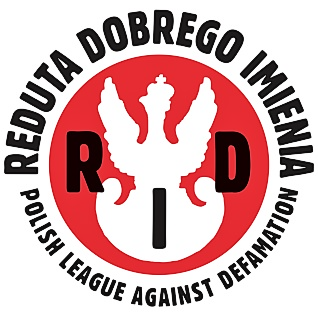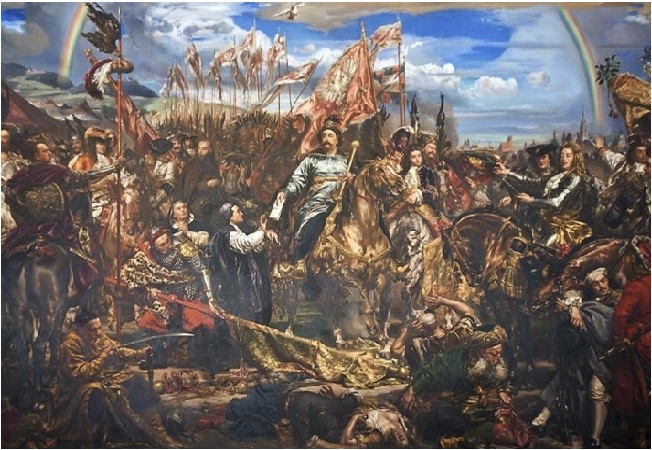On September 12, 2023, we celebrate the 340th anniversary of the victory of the Poles at the Battle of Vienna. „Venimus, vidimus et Deus vicit.” (We came, we saw, and God prevailed) – this phrase comes from a letter that King John III Sobieski sent, on this very day in 1683, to Pope Innocent XI, informing him of his triumph over the Ottoman army. In addition to the letter, the pope also received the captured Turkish flag, which used to be erroneously considered the so-called Holy Flag of the Prophet, the most important symbol of the Turkish army.
The victory of the Poles at Vienna, was a key event in European history, as it prevented a Turkish invasion of the continent. Let’s remember that at the Battle of Vienna, the Polish hussars commanded by King Jan III Sobieski, combined with allied troops, defeated the much more numerous Ottoman army, demonstrating unparalleled fighting skills and courage. King Jan III Sobieski became a national hero, and his triumph brought Poland both fame and also strengthened the Commonwealth’s position in Europe, which recognized Poland as a defender of Christian values on the continent.
As a reminder: For centuries, the Ottoman Empire had been consolidating its power through conquests, mainly across Asia. However, in the 17th century, the Turks began expanding into Europe, reaching the Balkans, Hungary, the Romanian principalities, Crete and Transylvania. In 1672 they also occupied Podolia, which had previously belonged to Poland. In October of the same year, in Buczacz, a peace treaty was concluded between the Ottoman Empire and the Republic, but it was not approved by the Polish Sejm. The treaty stipulated that Poland surrender its eastern lands to the Ottoman Empire and pay Turkey an annual tribute of 22,000 thalers. In 1673, the Polish Sejm rejected this peace, which was commonly referred to as the „disgraceful Peace of Buczacz,” because it made Poland in a sense a dependent state of the Ottoman Empire.
On November 11, 1673 at Chocim, between the army of the Polish-Lithuanian Commonwealth – commanded by Hetman Jan III Sobieski and the Ottoman Empire, there was a battle that was victorious for Poland and ended with a truce. It should be remembered that the victory at Chocim provided Hetman Jan III Sobieski with the Polish crown.
Despite the victory, the threat from Turkey was not resolved. King John III Sobieski, realizing that further armed clashes with the Ottoman Empire were inevitable, took steps to gain allies. Among other things, he planned to form a coalition with France and Sweden, and turned to the Habsburgs and Russia (both the tsar and the emperor did not react favorably to Polish efforts).
It was only in the face of a real Turkish threat and the failure of operations with the Ottomans that Leopold I Habsburg (King of Hungary since 1655, King of Bohemia since 1656, Archduke of Austria since 1657, and King of Germany and Holy Roman Emperor since 1658) sought an alliance with Poland. Eventually, on April 1, 1683, an alliance was concluded that pledged mutual assistance in the event of a Turkish attack. Pope Innocent XI became the guarantor of compliance with the alliance. It is worth mentioning that the Polish army was to receive financial support from the Emperor and the Pope.
At the same time, the Ottoman Empire undertook intensive warfare against the allies. Organizing a powerful army, headed by grand vizier Kara Mustafa, an attack was planned, but it was uncertain until the last moment whether they would strike Poland or Austria. As the Turkish army was joined by the Tatars, the grand vizier, wanting to surprise the allies (which was partially successful), set the direction of the attack, moving deep into Austria.
Under the onslaught of Ottoman troops, Emperor Leopold I turned to the allies for help. The Turkish expansion was moving with powerful force towards the imperial capital Vienna, and on July 14, 1683 the Ottoman army approached the city, and on July 16, 1683 it surrounded Vienna, pushing back, the Austrian troops.
Vienna was a well-prepared fortress, defending itself with an 11,000-strong garrison, a 5,000-strong city guard and artillery. Unfortunately, within two months of the siege, the Turks, thanks to continuous attacks and underground operations, managed to capture the first fortifications of the city, which posed a serious threat to the fortress itself, whose defenders were decimated as a result of these clashes.
Polish allied actions
Poland, fulfilling its allied obligations, took a number of measures to move to relieve Vienna. The Sejm of the Republic voted to authorize military action outside Poland’s borders and passed an extraordinary tax to create an army of nearly 50,000.
The attack of the Ottoman Empire’s army caused King Jan III Sobieski to order mobilization near Krakow, where 27,000 crown troops arrived. Without waiting for the delaying Lithuanians, he moved to the aid of Vienna.
On September 3, 1683, after crossing Silesia, Moravia and Bohemia, the Polish army joined forces on the Danube (40 km from Vienna) with Austrian and German troops. The commander-in-chief of the resulting army of nearly 70,000 was the Polish King, who was both the creator of the plan to strike the Turkish positions and also the architect of the victory over the army of Grand Vizier Kara Mustafa.
Battle of Vienna
King John III Sobieski gave orders for Austrian and German troops to attack the Turkish army along the right bank of the Danube, while the Polish army was to break into Vienna by a circuitous route.
On the morning of September 12, 1683, the battle began. The Turkish army, confident of its military superiority, (however, poorly fortified with fortifications), was forced to repel attacks by Austrian-German forces along the Danube, with the result that the Polish troops were provided with a free space on the side of the Vienna Forest (the Turkish army had no significant forces there, as it did not expect an attack from that side), from where the attack was launched in the afternoon.
At the edge of the Vienna Forest stretched a river valley, descending gently toward Vienna. A little closer there was a large Turkish encampment, and in the vineyards surrounding the slopes hid the Janissary troops. King Jan III Sobieski decided to clear the area and gave orders to General Marcin Kazimierz Kątski to advance infantry and artillery. After several hours of fighting, the Polish infantrymen pushed back the Turkish troops and opened the way for the cavalry.
Another element of the strategy chosen by Jan III Sobieski involved sending one hussar troop (under the command of Lieutenant Zbierzchowski) to reconnoitre the area. This maneuver was to bring information on whether there were ditches, wolf pits or siege ditches, etc. in the indicated area. The Polish ensign ran at a lunge through the Turkish positions, creating chaos, and in retreating pulled most of the Turkish cavalry, which came under fire from the Polish artillery. The action of the Polish cavalry confirmed intelligence data that an attack from this side was possible, unfortunately, heavy casualties were suffered as a result.
At around 6:00 pm, the Polish king gave the signal to launch the main attack. The hussars commanded by Hetmans Stanislaw Jablonowski and Mikolaj Sieniawski, as well as regiments commanded directly by Jan III Sobieski, moved to charge the Turkish army. The Ottoman army could not withstand the force of the Polish attack, the Tatars were smashed first, then the spahis, then the Janissary infantry, so far besieging Vienna. Under the onslaught of the overwhelming superiority of the Polish troops, the Grand Vizier – Kara Mustafa and his entourage fled the battlefield.
The Poles triumphed! According to historians, the relief of Vienna lasted about 12 hours, of which 11 and a half hours lasted for artillery fire, the purpose of which was to prepare the attack of the Polish hussars. The charge of Jan III Sobieski’s army was supposed to end within half an hour.
In a letter from the battlefield, Jan III Sobieski wrote to his Marysienka: „God and our Lord forever blessed has given victory and fame to our nation, such as past ages never heard of.”
The Vienna triumph gave rise to a series of successes for Christian armies: the victory at Parkany with Sobieski in October 1683, the capture of Buda in 1686 and the victory at Zenta in 1697.
On January 26, 1699, the Holy League signed a peace treaty with the Ottoman Empire at Karlovice. As a result, Turkey lost Hungary with Transylvania to the Habsburgs, the Peloponnese and Dalmatia to Venice. Podolia was returned to the Republic of Poland.

